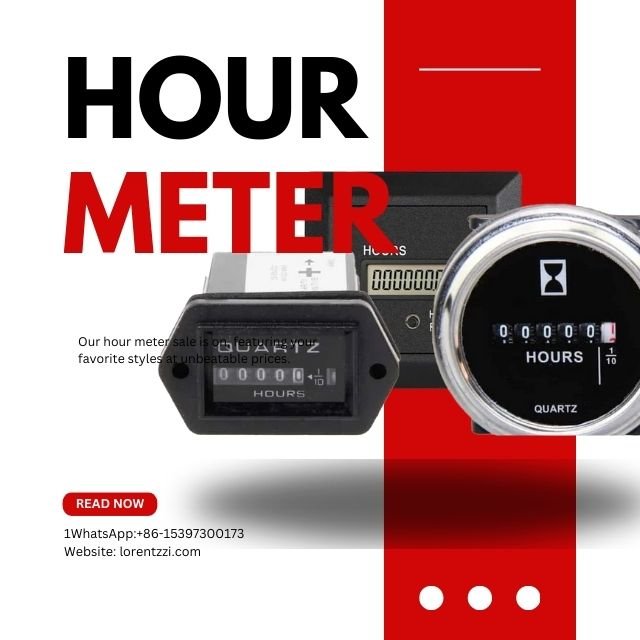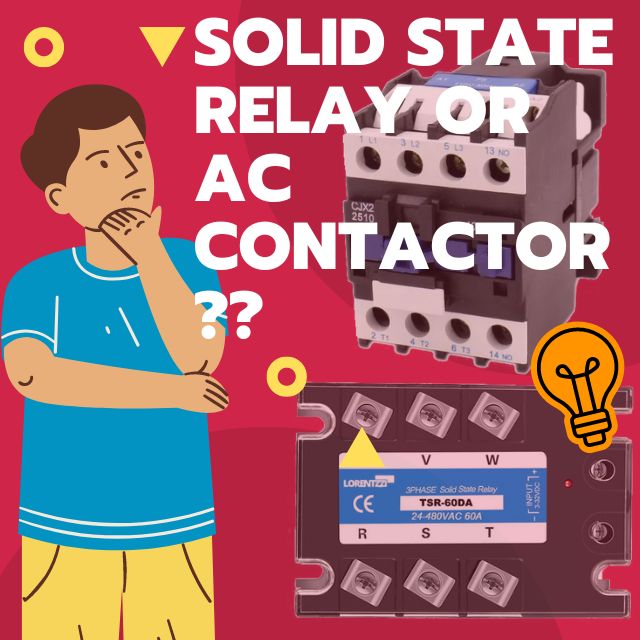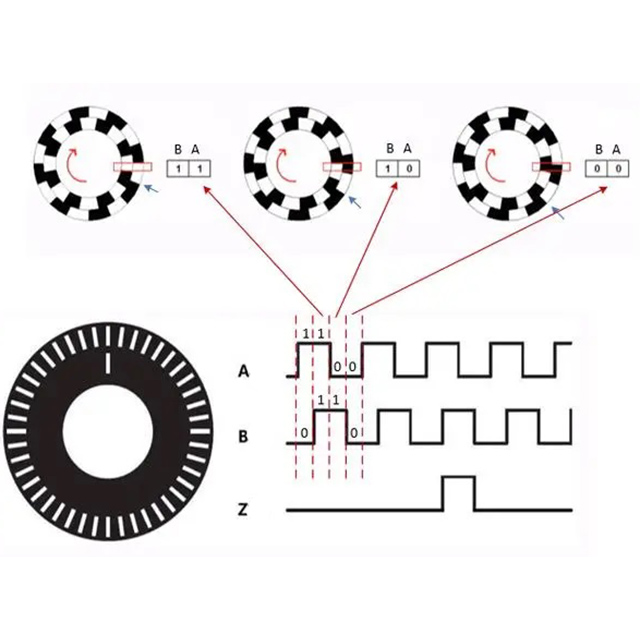If you have knowledge of electronics, it is easy for us to know that the inductive sensors are designed to detect metallic targets, but can inductive sensors detect aluminum? The answer is yes. Why? we will provide a full explanation how it works with aluminum.
What is an inductive sensor?

Inductive sensor is an electronic switch which has no physical contact, its outputs can be PNP or NPN according to the output levels differences. PNP sensor output is high level, to form a complete circuit, the PNP sensor output signal cable should be connected to ground or to the black cable of this sensor. While NPN sensor output is low level, therefore, NPN sensors output terminal should be wired to the sensor’s positive pole. The inductive sensor uses eddy current effect to sense a metal object which is within its alternating magnetic field.
What is the working principle of an inductive proximity sensor?
The inductive sensor working principle is based on electromagnetic induction and eddy current effects generated by its inner circuit, the inductive proximity sensor consists of a ferrite core with coils, an oscillator, a Schmitt trigger and an output amplifier
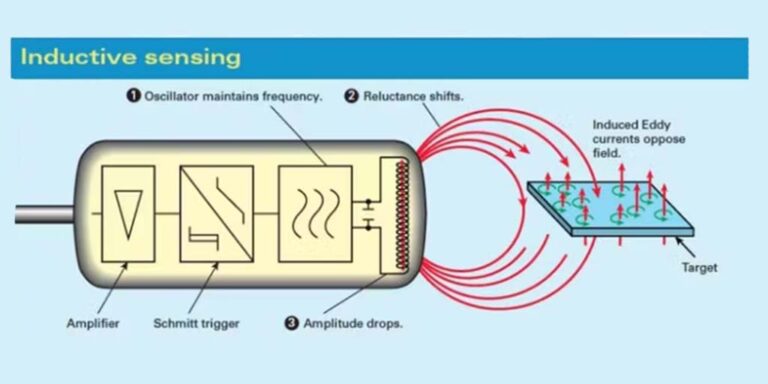
Oscillator will let the coil generate an alternating magnetic field; when a metallic object is within these fields, an eddy current will form on the surface of this metal object. This eddy current will conversely cause electromagnetic oscillation to weaken or stop oscillation. Schmitt trigger can feel this change and command the output circuit open or close.
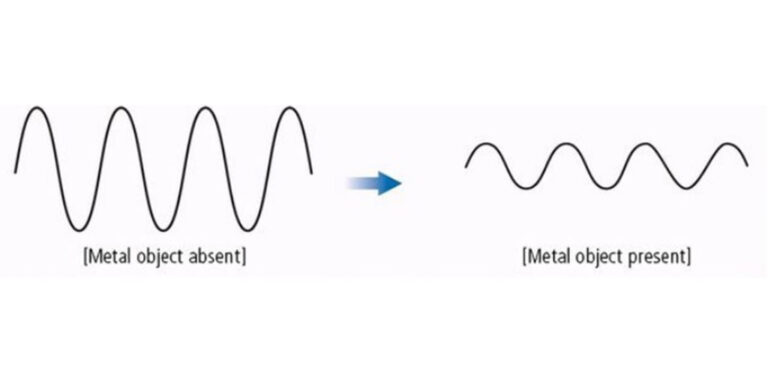
Can inductive sensors detect aluminum?
Yes, inductive sensors can detect aluminum or aluminum products, but the detection distance is reduced compared to detecting iron or steel products. According to actual experiments, for the same inductive sensor, the detection distance of aluminum products will be 40% shorter than the detection distance of steel products.
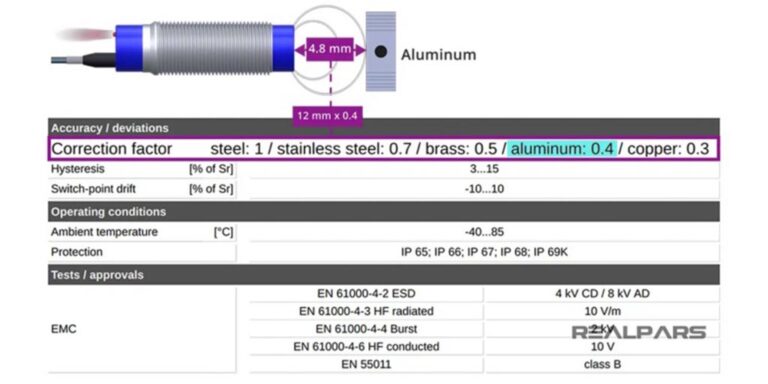
Why can inductive sensors detect aluminum?
As mentioned above, although the detection distance of inductive sensors for aluminum is not as far as that of iron objects, it can be done. Why does the detection distance become shorter? The reason is that the magnetic permeability of aluminum is lower than that of iron.

Picture sources from https://www.researchgate.net/figure/Magnetic-permeability-of-common-materials_tbl1_350439333.
Low magnetic permeability results in reduced magnetic flux through the aluminum, resulting in reduced eddy current effects. So in order for the sensor to work properly, the aluminum needs to be closer to the sensor coil to capture more magnetic flux.
Inductive proximity sensor advantages and disadvantages
Advantage:
- Simple structure, simple wiring and low cost
- Non-contact detection: The inductive sensor does not directly contact the object being detected, so it can avoid wear and damage on the surface of the object, and also reduces maintenance costs.
- High precision: Inductive sensors can achieve high-precision detection, especially for some objects that are small or difficult to observe directly.
- Wide range of applications: Inductive sensors are suitable for detecting various metal objects, such as iron, stainless steel, copper, aluminum, etc.
- Protection level IP67: During the production process, the inductive proximity switch will fill the inside of the threaded pipe with epoxy resin to ensure tight sealing.
Shortcoming:
- Only suitable for detecting metal objects. Capacitive proximity switches or photoelectric switches are required for detection of non-metallic objects.
- The detection distances of different types of metal objects vary greatly: For the same sensor, objects with greater magnetic permeability have longer detection distances.
- Susceptible to interference: Since inductive sensors are very sensitive to magnetic fields, they are susceptible to interference from external magnetic fields, thus affecting the accuracy of detection results.
- Not resistant to high temperatures: Inductive proximity switches are greatly affected by temperature, and high-temperature environments may cause a decline in detection performance. Therefore, equipment needs to be properly protected when used in high temperature environments.
Conclusion
From what is an inductive proximity sensor and its working principle knowledge, we can clearly understand why inductive sensors can detect aluminum. The reason is aluminum, if under an alternating magnetic field, it will also generate eddy current, but because of its low magnetic permeability, it is very weak. In order to get more magnetic flux, the aluminum target should be closer to the inductive sensor. So this is why the aluminum detecting distance is only 40% of an iron target.
Lorentzzi inductive sensors have strong ability to handle sensing various kinds of metallic objects, no matter if it is iron, steel or aluminum or copper. Leave the comment below to get the new prices of our inductive proximity sensors.



